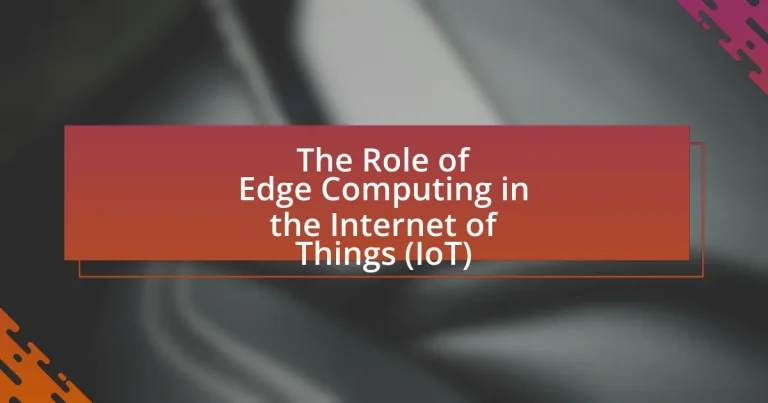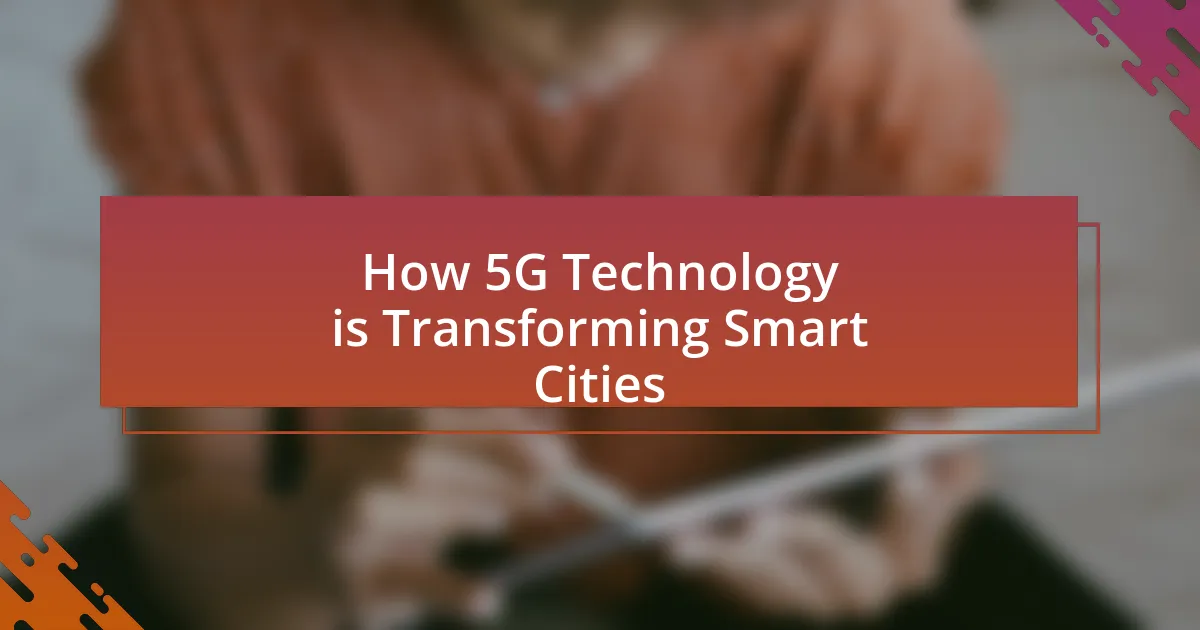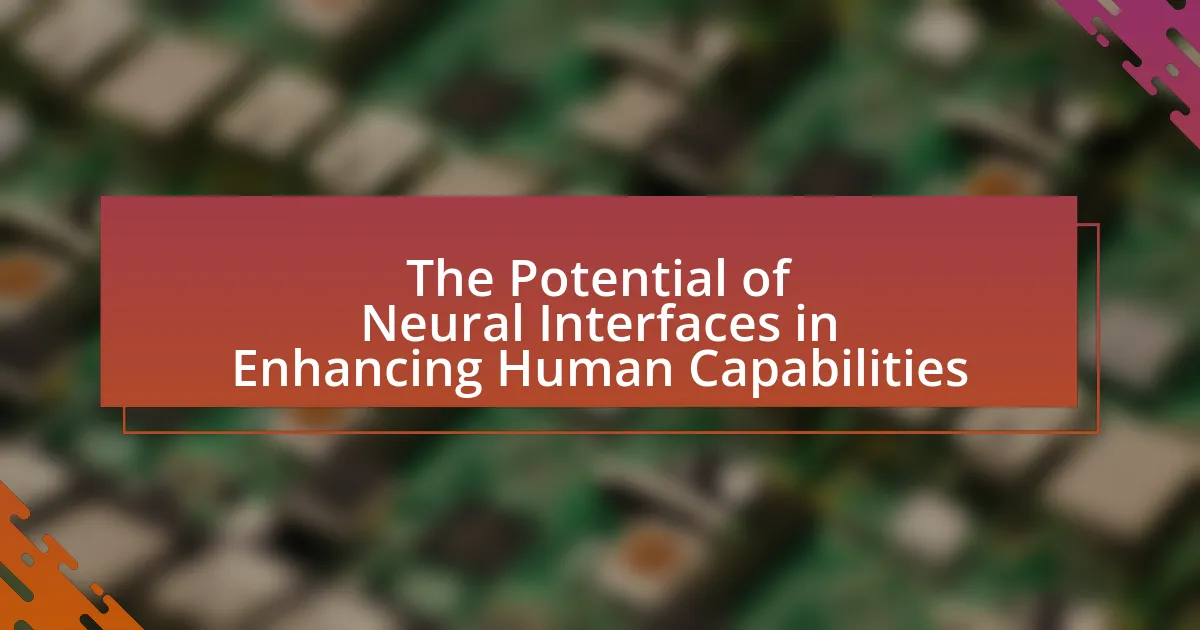Edge computing is a pivotal technology in the Internet of Things (IoT), enabling data processing closer to the source to reduce latency and bandwidth usage. This article explores how edge computing enhances IoT functionality through real-time data analysis, improves response times, and addresses challenges such as data security and management. Key components of edge computing, including edge devices, gateways, and analytics, are discussed, along with its implications for various industries like manufacturing and healthcare. Additionally, the article highlights future trends, emerging technologies, and best practices for implementing edge computing in IoT environments.
--Edge-computing-plays-a-crucial-r-1.webp)
What is the Role of Edge Computing in the Internet of Things (IoT)?
Edge computing plays a crucial role in the Internet of Things (IoT) by processing data closer to the source, thereby reducing latency and bandwidth usage. This proximity allows for real-time data analysis and decision-making, which is essential for applications such as autonomous vehicles and smart cities. According to a report by Gartner, by 2025, 75% of enterprise-generated data will be created and processed outside a centralized data center, highlighting the shift towards edge computing in IoT environments. This decentralized approach enhances efficiency, improves response times, and supports the scalability of IoT systems.
How does Edge Computing enhance IoT functionality?
Edge computing enhances IoT functionality by processing data closer to the source, which reduces latency and bandwidth usage. This proximity allows for real-time data analysis and quicker decision-making, essential for applications like autonomous vehicles and smart manufacturing. According to a report by Gartner, by 2025, 75% of enterprise-generated data will be created and processed outside centralized data centers, highlighting the shift towards edge computing. This capability not only improves operational efficiency but also enables more reliable and responsive IoT systems.
What are the key components of Edge Computing in IoT?
The key components of Edge Computing in IoT include edge devices, edge gateways, and edge analytics. Edge devices are the sensors and actuators that collect and transmit data from the physical environment. Edge gateways serve as intermediaries that process data locally, reducing latency and bandwidth usage by filtering and aggregating data before sending it to the cloud. Edge analytics involves processing data at the edge to derive insights in real-time, enabling faster decision-making. These components work together to enhance the efficiency and responsiveness of IoT systems, as evidenced by studies showing that edge computing can reduce latency by up to 50% compared to traditional cloud computing methods.
How does data processing at the edge differ from cloud computing?
Data processing at the edge differs from cloud computing primarily in its location and latency. Edge computing processes data closer to the source of data generation, such as IoT devices, which reduces latency and bandwidth usage, enabling real-time data analysis. In contrast, cloud computing centralizes data processing in remote data centers, which can introduce delays due to data transmission over the internet. For instance, edge computing can support applications like autonomous vehicles that require immediate decision-making, while cloud computing is better suited for tasks that can tolerate latency, such as data storage and batch processing.
Why is Edge Computing critical for IoT applications?
Edge Computing is critical for IoT applications because it enables real-time data processing at the source of data generation, reducing latency and bandwidth usage. By processing data locally, devices can respond to events instantly, which is essential for applications like autonomous vehicles and industrial automation. According to a report by Gartner, by 2025, 75% of enterprise-generated data will be created and processed outside a centralized data center, highlighting the shift towards decentralized computing models that enhance efficiency and responsiveness in IoT ecosystems.
What challenges does IoT face that Edge Computing addresses?
Edge Computing addresses several challenges faced by IoT, primarily latency, bandwidth limitations, and data security. By processing data closer to the source, Edge Computing reduces latency, enabling real-time decision-making essential for applications like autonomous vehicles and industrial automation. Additionally, it alleviates bandwidth constraints by minimizing the amount of data transmitted to centralized cloud servers, which is crucial given that IoT devices generate vast amounts of data. Furthermore, Edge Computing enhances data security by keeping sensitive information local, reducing the risk of exposure during transmission. These solutions are vital as IoT continues to expand, with projections indicating that there will be over 75 billion connected devices by 2025, highlighting the need for efficient data management and security measures.
How does Edge Computing improve response times in IoT systems?
Edge Computing improves response times in IoT systems by processing data closer to the source, thereby reducing latency. This localized data processing minimizes the distance that data must travel to reach the cloud, which is crucial for time-sensitive applications. For instance, a study by Cisco indicates that edge computing can reduce latency by up to 75%, enabling real-time decision-making in applications such as autonomous vehicles and industrial automation. By leveraging edge devices, IoT systems can achieve faster response times, enhancing overall system performance and user experience.
What are the security implications of Edge Computing in IoT?
The security implications of Edge Computing in IoT include increased vulnerability to attacks due to the distributed nature of edge devices. These devices often lack robust security measures, making them potential entry points for cyber threats. For instance, a report by the Ponemon Institute in 2020 indicated that 60% of organizations experienced a data breach related to IoT devices, highlighting the risks associated with inadequate security protocols at the edge. Additionally, the proximity of edge devices to end-users can lead to privacy concerns, as sensitive data may be processed locally without sufficient encryption or access controls.
How does Edge Computing enhance data security for IoT devices?
Edge Computing enhances data security for IoT devices by processing data closer to the source, thereby reducing the risk of data breaches during transmission. By localizing data processing, sensitive information does not need to travel over the internet, which minimizes exposure to potential cyber threats. Additionally, Edge Computing allows for real-time data analysis and anomaly detection, enabling quicker responses to security incidents. According to a report by Gartner, by 2025, 75% of enterprise-generated data will be created and processed outside a centralized data center, highlighting the shift towards decentralized security measures that Edge Computing facilitates.
What vulnerabilities are introduced by Edge Computing in IoT?
Edge computing in IoT introduces several vulnerabilities, primarily due to its decentralized nature and proximity to end devices. These vulnerabilities include increased attack surfaces, as edge nodes can be more easily compromised than centralized cloud systems. Additionally, data privacy risks arise from processing sensitive information at the edge, where security measures may be less robust. A study by the International Journal of Information Management highlights that edge devices often lack adequate security protocols, making them susceptible to unauthorized access and data breaches. Furthermore, the reliance on wireless communication increases the risk of interception and man-in-the-middle attacks.
How does Edge Computing impact data management in IoT?
Edge computing significantly enhances data management in IoT by processing data closer to the source, thereby reducing latency and bandwidth usage. This localized processing allows for real-time data analysis and decision-making, which is crucial for applications like autonomous vehicles and smart cities. According to a report by Gartner, by 2025, 75% of enterprise-generated data will be created and processed outside centralized data centers, highlighting the shift towards edge computing. This approach not only improves response times but also minimizes the amount of data that needs to be transmitted to the cloud, leading to more efficient use of network resources and improved overall system performance.
What role does Edge Computing play in data storage for IoT?
Edge Computing significantly enhances data storage for IoT by processing data closer to the source, thereby reducing latency and bandwidth usage. This localized processing allows IoT devices to store and analyze data in real-time, leading to faster decision-making and improved efficiency. For instance, according to a report by Gartner, by 2025, 75% of enterprise-generated data will be created and processed outside the centralized data center, highlighting the shift towards edge computing in IoT environments. This approach not only optimizes storage capacity but also ensures that critical data is available for immediate use, which is essential for applications like autonomous vehicles and smart cities.
How does Edge Computing facilitate real-time data analytics in IoT?
Edge Computing facilitates real-time data analytics in IoT by processing data closer to the source, thereby reducing latency and bandwidth usage. This proximity allows for immediate data analysis and decision-making, which is crucial for applications requiring instant responses, such as autonomous vehicles or industrial automation. According to a report by Gartner, by 2025, 75% of enterprise-generated data will be created and processed outside centralized data centers, highlighting the shift towards edge computing for efficient data handling.
What industries are leveraging Edge Computing in IoT?
Industries leveraging Edge Computing in IoT include manufacturing, healthcare, transportation, and smart cities. In manufacturing, Edge Computing enables real-time data processing for predictive maintenance and quality control, enhancing operational efficiency. In healthcare, it supports remote patient monitoring and real-time analytics, improving patient outcomes. The transportation sector utilizes Edge Computing for fleet management and traffic monitoring, optimizing logistics and safety. Smart cities implement Edge Computing for efficient resource management and enhanced public services, such as smart lighting and waste management. These applications demonstrate the critical role of Edge Computing in enhancing IoT capabilities across various sectors.
How is Edge Computing transforming manufacturing through IoT?
Edge computing is transforming manufacturing through IoT by enabling real-time data processing at the source of data generation, which enhances operational efficiency and decision-making. This technology reduces latency, allowing manufacturers to respond quickly to changes in production conditions, thereby minimizing downtime and optimizing resource allocation. For instance, a study by Gartner indicates that by 2025, 75% of enterprise-generated data will be created and processed outside centralized data centers, highlighting the shift towards decentralized data management in manufacturing. Additionally, edge computing facilitates predictive maintenance by analyzing equipment data locally, which can lead to a 10-20% reduction in maintenance costs, as reported by McKinsey. This integration of edge computing with IoT not only streamlines processes but also supports the development of smart factories, where interconnected devices communicate seamlessly to enhance productivity and innovation.
What benefits does Edge Computing provide in healthcare IoT applications?
Edge Computing enhances healthcare IoT applications by enabling real-time data processing at the source, which reduces latency and improves response times for critical medical decisions. This localized processing allows for quicker analysis of patient data from devices such as wearables and sensors, facilitating timely interventions. Additionally, Edge Computing minimizes bandwidth usage by filtering and processing data locally before sending it to the cloud, which is particularly beneficial in environments with limited connectivity. According to a study published in the Journal of Medical Systems, implementing Edge Computing in healthcare can lead to a 30% reduction in data transmission costs and a significant increase in the efficiency of healthcare delivery systems.
What are the future trends of Edge Computing in IoT?
Future trends of Edge Computing in IoT include increased data processing at the edge, enhanced security measures, and the integration of artificial intelligence. As IoT devices proliferate, processing data closer to the source reduces latency and bandwidth usage, enabling real-time analytics. According to a report by Gartner, by 2025, 75% of enterprise-generated data will be created and processed outside centralized data centers, highlighting the shift towards edge computing. Additionally, advancements in security protocols will be crucial as more devices connect, with a focus on protecting data at the edge. The incorporation of AI at the edge will facilitate smarter decision-making and automation, further driving efficiency in IoT applications.
How will advancements in Edge Computing shape IoT development?
Advancements in Edge Computing will significantly enhance IoT development by enabling real-time data processing closer to the source of data generation. This proximity reduces latency, allowing for faster decision-making and improved responsiveness in IoT applications. For instance, according to a report by Gartner, by 2025, 75% of enterprise-generated data will be processed outside centralized data centers, highlighting the shift towards edge computing. Additionally, edge computing enhances bandwidth efficiency by minimizing the amount of data transmitted to the cloud, which is crucial for IoT devices that generate vast amounts of data. This capability supports more scalable and efficient IoT ecosystems, ultimately driving innovation and expanding the range of applications in sectors such as healthcare, manufacturing, and smart cities.
What emerging technologies are influencing Edge Computing in IoT?
Emerging technologies influencing Edge Computing in IoT include Artificial Intelligence (AI), 5G networks, and blockchain. AI enhances data processing at the edge by enabling real-time analytics and decision-making, which is crucial for IoT applications that require immediate responses. The deployment of 5G networks significantly improves connectivity and bandwidth, allowing for faster data transmission and reduced latency, which is essential for edge devices to function effectively. Blockchain technology provides secure data sharing and integrity, ensuring that the data processed at the edge remains trustworthy and tamper-proof. These technologies collectively enhance the efficiency, security, and responsiveness of Edge Computing in IoT environments.
What best practices should be followed when implementing Edge Computing in IoT?
When implementing Edge Computing in IoT, best practices include ensuring data security, optimizing data processing, and maintaining interoperability. Data security is critical; implementing encryption and secure access controls protects sensitive information from breaches. Optimizing data processing involves analyzing data locally to reduce latency and bandwidth usage, which enhances real-time decision-making capabilities. Maintaining interoperability ensures that various devices and platforms can communicate effectively, which is essential for seamless integration and functionality across the IoT ecosystem. These practices are supported by industry standards and frameworks that emphasize security, efficiency, and compatibility in IoT deployments.
It is not possible to provide an answer to the question “
” as it does not contain a specific inquiry or context to address.




